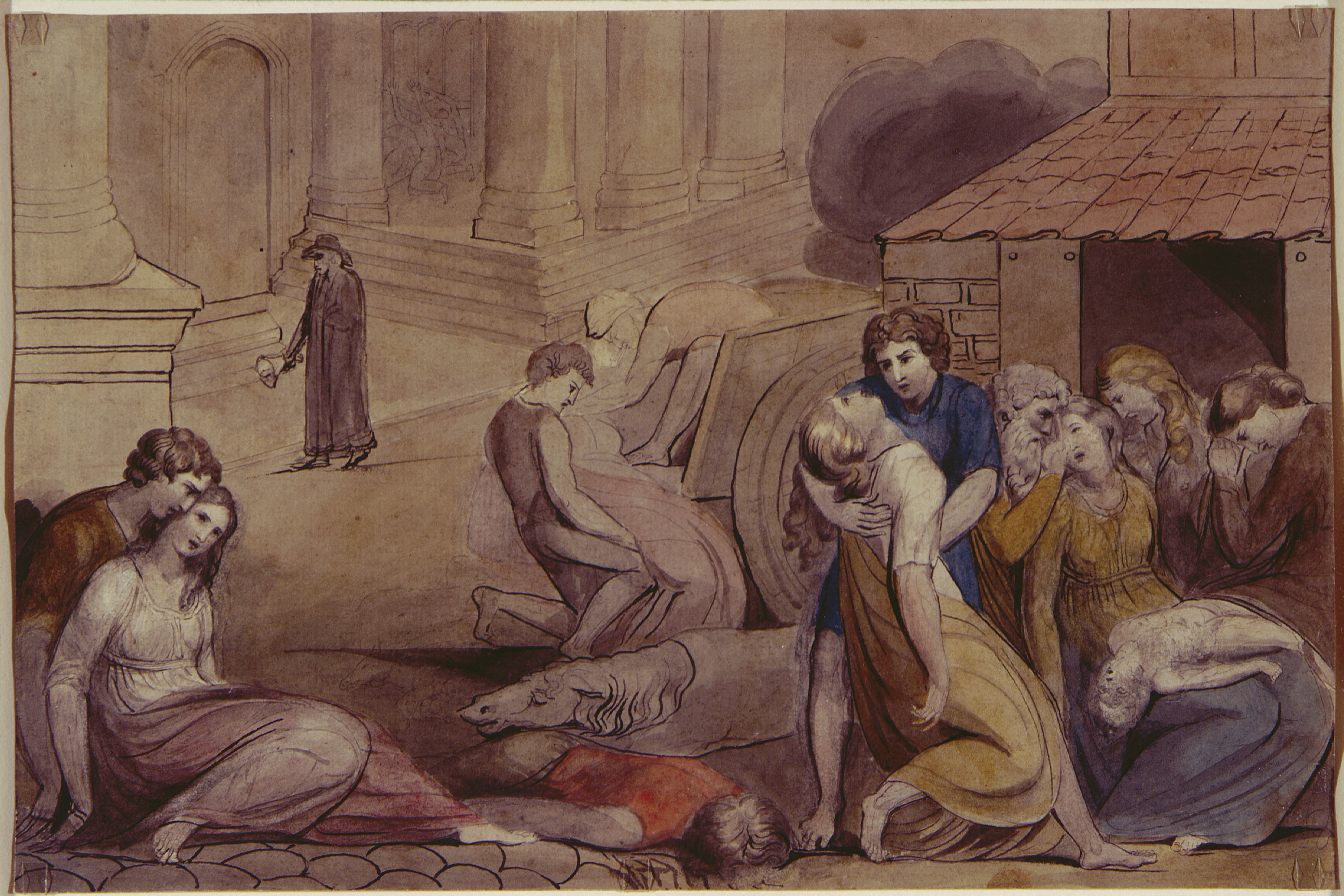The William Blake Archive is pleased to announce the publication of a digital edition of twenty-seven water color drawings produced by Blake between 1775 and c. 1790.
Blake’s activities as a water colorist from the mid-1770s through the next decade reveal his increasing skills in that medium, ranging from apprentice work to original compositions exhibited at the Royal Academy. Assignments from his engraving instructor, James Basire, included the precise copying of tomb monuments in Westminster Abbey (Objects 1-5). These water colors were later engraved, probably with Blake’s assistance, as illustrations for Joseph Ayloffe’s Account of Some Ancient Monuments in Westminster Abbey (1780), republished in volume 2 of the Society of Antiquaries’ Vetusta Monumenta (c. 1789). This early contact with Gothic art profoundly affected Blake’s later work as an artist and his writings on the history of art.
Shortly after his release from apprenticeship in 1779, Blake began to develop a series of designs picturing major events in the history of England (Objects 7-12). He exhibited one of these, The Death of Earl Goodwin (Object 9) or a more finished version of the design, at the Royal Academy in 1780. This group of pictures may have culminated in “The History of England, a small book of Engravings,” advertised in Blake’s prospectus To the Public in October 1793. Unfortunately, no copy of that work has ever been recorded. Blake developed at least one work in this series, Pestilence, Probably the Great Plague of London (Object 12), into a slightly larger and more finished water color (Object 14). Lear and Cordelia was probably executed as part of the history of England series but is presented in the Archive under Water Color Drawings, Illustrations to Shakespeare.

Blake’s early water colors include several designs with biblical subjects (Objects 6, 13, 15, 18, 20-23, 27). The most highly finished and important of these are three illustrations to the story of Joseph and his brethren recounted in Genesis (Objects 20, 22, 23). These were exhibited at the Royal Academy in 1785. One year earlier, Blake’s A Breach in a City, the Morning after the Battle (Object 19), had appeared at the same venue. Blake was trying, by the mid-1780s, to establish his reputation as a “history” painter—that is, as a specialist in themes taken from history, the Bible, and canonical literary texts such as Milton’s Paradise Lost. In the eighteenth century, such subjects were believed to be appropriate for the greatest artistic ambitions, but all of Blake’s exhibited works were in water colors rather than the more highly regarded medium of oil painting.
Almost all of Blake’s water colors fit comfortably within the long tradition of water color drawing, in which one delineates form by line and the tinting is confined within firm outlines. Water color painting, a style developed by artists such as J. M. W. Turner, allowed for a freer use of washes, unconfined by pen and ink or pencil boundaries and without underlying washes laid in for modeling.
As always, the William Blake Archive is a free site, imposing no access restrictions and charging no subscription fees. The site is made possible by the University of North Carolina at Chapel Hill with the University of Rochester, the continuing support of the Library of Congress, and the cooperation of the international array of libraries and museums that have generously given us permission to reproduce works from their collections in the Archive.
Morris Eaves, Robert N. Essick, and Joseph Viscomi, editors
Joseph Fletcher, managing editor, Michael Fox, assistant editor
The William Blake Archive
